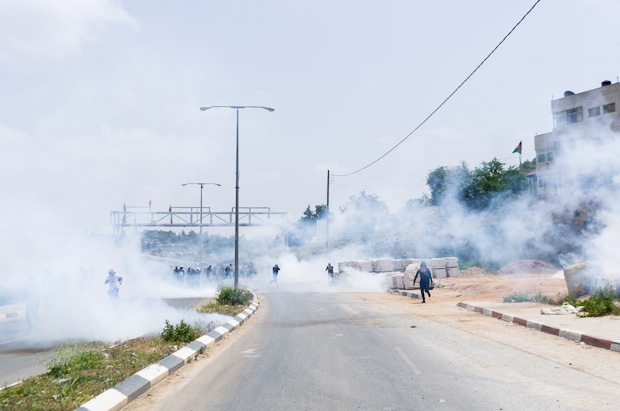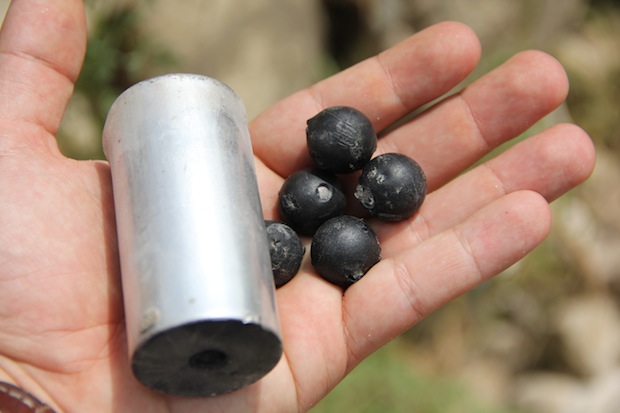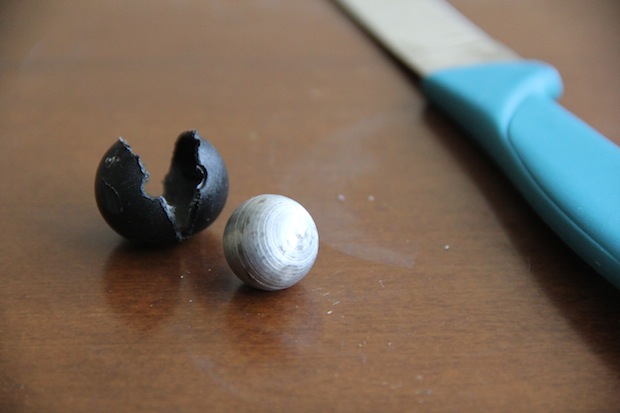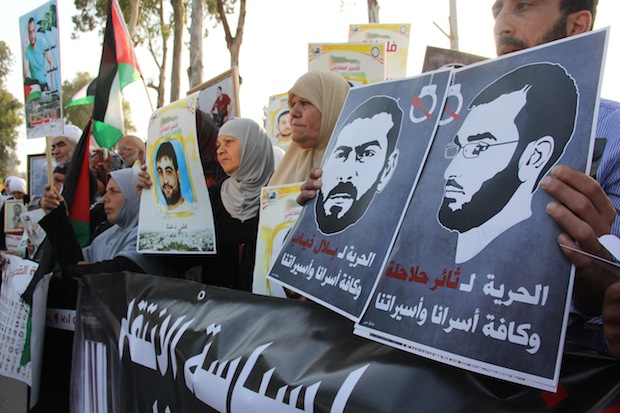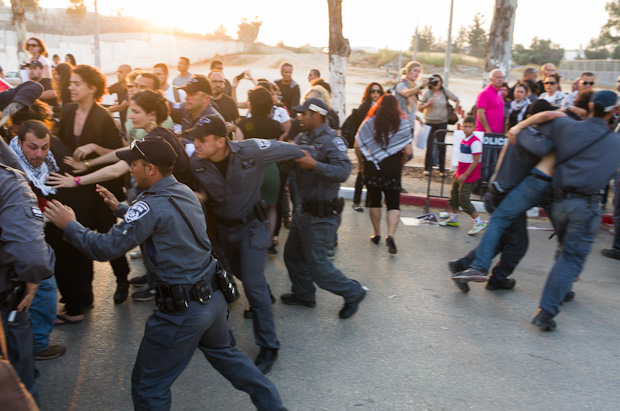From the River to the Sea, Palestinians are prevented from protesting freely for their rights.
Yesterday, I attended my first Palestinian demonstration across the Green Line, in front of Ramle Prison. Having been to many protests in the West Bank I was eager to assess the differences between the two events and how the Israeli authorities respond to each.
The day before, I had attended a demonstration in front of Ofer Prison near Ramallah. Both events were in support of the Palestinian prisoners on hunger strike in Israeli jails, and therefore, relatively parallel.
In the occupied West Bank, peaceable assembly by Palestinians is prohibited unless authorized by the Israeli military, which does not happen. Thus, any form of collective protest is dealt with harshly by the Israeli military, leaving Palestinians with no outlet for releasing public frustration or protesting for their basic rights.
On Wednesday, Palestinian demonstrators once again tried to reach Ofer prison in order to show their support for the approximately 2,000 Palestinian prisoners now on hunger strike in what has been billed the “Battle of Empty Stomachs.” Yet before the protest could even begin, the Israeli soldiers assembled on the road that leads to the prison began firing endless volleys of teargas canisters and excessive amounts of plastic-coated steel bullets.
I was nearly hit by these so-called “rubber” bullets on several occasions during the protest, even when I had moved from the front lines to a position in the back a few hundred meters from the soldiers. Some 20 Palestinians were reported injured. In the end, what could have been a peaceful demonstration and public expression of discontent devolved into riot control and stone throwing.
On Thursday in front of Ramle Prison, the scenario was much different. Peaceable assembly was permitted in the vicinity of the prison, to a small area designated by the Israeli police. There the protesters chanted slogans and displayed posters and flags for nearly an hour and a half.
When a bulk of the demonstrators tried to move beyond the metal grate fence erected for them, however, the police moved in quickly and aggressively, assaulting several of the protesters and arresting at least ten of them.
So, although people were allowed to protest, they were ultimately confined by police to a tiny space away from the public eye. As soon as the demonstrators moved outside their little box, the police pushed them back in using force—although without resorting to the type of extreme measures that are routinely used inside the occupied territories against the Palestinians with no rights. Those arrested were dealt with harshly, however, and reports from the jail said that the detainees were beaten by police far away from the watchful eye of the press cameras.
It is unmistakable that the protests are in many ways linked and reflective of how Palestinians are treated on the whole. Although those Palestinian citizens of Israel have more rights than their occupied counterparts, their voice is not appreciated and quickly silenced as soon as it attempts to speak not solely for its own sake but to influence those around them. Their rights protect them to some extent under the law but few would bat an eye if, and when, they are trampled on. Palestinians in the occupied territories are not even on the radar of Israelis and the military can deal with them as they see fit with virtual impunity. In the end, the grievances of all Palestinians are perceived as threatening and are crushed when they try to become more than just a show.
UPDATE:
It is worth noting that several of those arrested at the Ramle Prison demonstration were in fact Israeli Jews, who were not spared the treatment because of their background, but because of what they were demonstrating for. Many of them were the “anarchists” that face arrest often when they protest in the weekly village demonstrations of the West Bank. It will be interesting to hear the testimonies of those arrested to note what differences there may have been in the entire process of their arrest, detention, interrogation and release.


